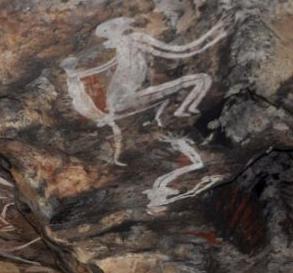Erotica, pornography, adult art … there are many names for depictions of the naked human body and sexuality. Debate over the place this type of entertainment has in our culture has been raging on for decades with people generally becoming more and more accepting of expressing sexuality. Still, there are those who claim indulging in this type of entertainment is a modern invention – something brought to the forefront of our national consciousness thanks to the advent of streaming movies, downloadable photos and easier ways to make, save and share erotica.
 The truth, however, is that humans have a long history of wanting to view naked people and know what they’re getting up to between the sheets. IN fact, this passion for pornography dates back to the days long before there were beds, sheets or bedrooms in which to have fun.
The truth, however, is that humans have a long history of wanting to view naked people and know what they’re getting up to between the sheets. IN fact, this passion for pornography dates back to the days long before there were beds, sheets or bedrooms in which to have fun.
In fact, scientists have found pornographic images dating back to caveman days, although some do lead people to wonder if they are truly graphic images or if modern day man is reading too much into the symbolism. Certainly there are examples of the naked form which are unmistakable. Perhaps the most famous is the Venue figures found throughout Europe and even into Siberia. These figures are of the female body with exaggerated body parts, most notably their breasts and hips.
While it’s easy to see that Venus figures are a representation of a naked woman, other examples can be more difficult to decipher. There are plenty of examples of phallic statues and figurines, though there haven’t been many full body representations of men found …. until now.
In 2012, archaeologists found what appeared to be a drawing of man with an oversized penis while excavating a cave n Brazil. The drawing is crude, to be sure, but experts seem to agree that it was meant to depict men at the time in a way that even modern men can relate to – with some exaggeration regarding their endowment.
Don’t worry if the graphic nature doesn’t jump right out at you. Experts in ancient drawings may have known what it was right away but when it was first published, most people needed some help seeing the scandalous subject. So they released an explanation of the drawing, in order to better illustrate what the original artist was trying to convey.
 As a result of artistic interpretation, some people say the drawing isn’t necessarily sexual, though they don’t seem to have any explanation for the additional appendage. In the end, beauty – or size – may be in the eye of the beholder. But this discovery does drive home the idea that erotic imagery is nothing new and, in fact has been influencing human development since our earliest days.
As a result of artistic interpretation, some people say the drawing isn’t necessarily sexual, though they don’t seem to have any explanation for the additional appendage. In the end, beauty – or size – may be in the eye of the beholder. But this discovery does drive home the idea that erotic imagery is nothing new and, in fact has been influencing human development since our earliest days.
It also illustrates just how ingrained and important sexuality is with regards to the story and evolution of mankind. Sex is fun for a reason – it helps us evolutionarily – but it’s also immensely rewarding psychologically and even socially. Primitive anthropologists have suggested in the past that people who had access to or the ability to make erotic icons would have been sought after and popular members of a community. So it’s reasonable to imagine this early artist may have created the drawing to make people laugh or gain favour with someone.
Piecing together the history of human sexuality is a difficult job, partly because of the taboos associated with sex by many cultures at different points in time. The discovery of ancient forms of erotica prove, however, that sexuality has always been a driving and attractive force for humans – a fact which is just as true now as it was when we were still living in caves.










